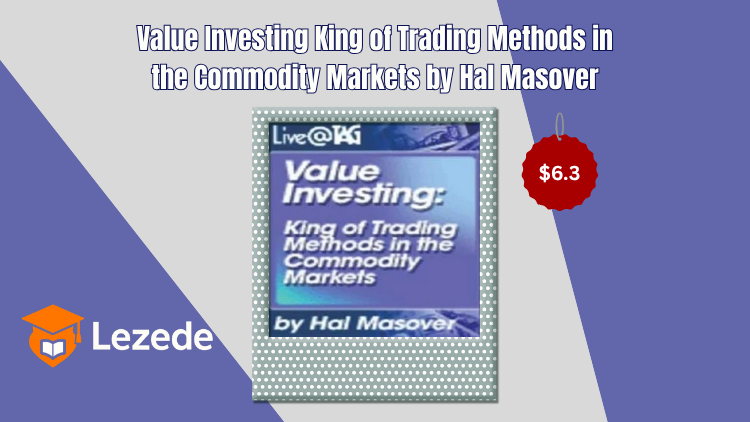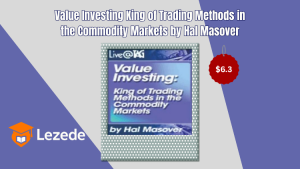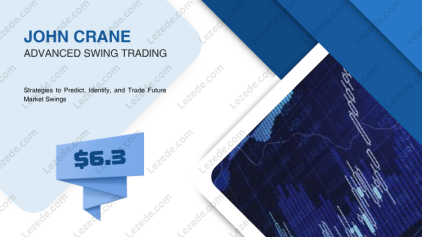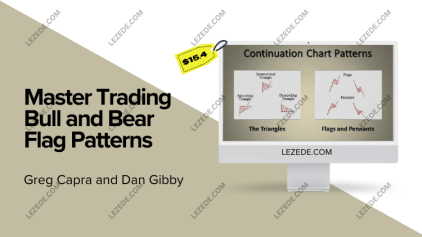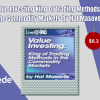Value Investing King of Trading Methods in the Commodity Markets by Hal Masover Free Download – Includes Verified Content:
Review of Value Investing: King of Trading Methods in the Commodity Markets by Hal Masover
In the fast-paced world of commodities, identifying a consistently reliable trading method can feel like a challenge. Hal Masover’s Value Investing in Commodity Futures positions itself as a guiding light for traders who value a steady, long-term game plan. This in-depth resource explores the mechanics of scale trading, setting itself apart from standard strategies by focusing on fundamental analysis rather than short-term chart patterns. Whether you’re an experienced market participant or just stepping into commodities, Masover’s approach provides a clear path for navigating volatility and boosting returns with disciplined value investing.
Hal Masover’s Distinctive Method: Scale Trading
At the heart of Masover’s philosophy is scale trading, a deliberate and systematic way of engaging the markets. Unlike methods that rely almost entirely on technical signals or market momentum, scale trading is anchored in the intrinsic worth of a commodity. The process involves gradually expanding or trimming positions as prices shift, lowering exposure to risk and positioning traders to capture multi-month or multi-year moves.
Masover explains how this technique enables investors to “accumulate slowly” on price weakness and “lighten positions” as values climb — staying true to the enduring “buy low, sell high” principle. This stands in stark contrast to fast-paced trading that often chases trends and invites emotional decision-making. By sticking with scale trading, traders can maintain a balanced pace and reduce the psychological stress that comes with erratic market moves.
Essential Components of Scale Trading
Masover identifies several building blocks for successful scale trading:
-
Cost Averaging – Phasing into trades to smooth entry prices and counteract market noise.
-
Position Sizing – Matching trade volume to prevailing conditions and personal risk limits.
-
Profit Capture – Gradually taking profits as targets are reached while leaving part of the position open for further gains.
-
Risk Controls – Applying stop-losses and other safeguards to protect capital.
By carefully structuring entries and exits around these principles, traders gain a consistent framework that can adapt to shifting market landscapes.
Fundamental Analysis vs. Technical Analysis in Commodities
A hallmark of Masover’s strategy is his preference for fundamentals over purely technical signals. Technical analysis studies past price data to anticipate future action, while fundamental analysis digs into supply-demand forces, political events, and economic drivers that shape long-term value.
Masover believes that, especially in the volatile commodities sector, knowing the real economic worth of a product offers a more stable base for decision-making. While charts have their place, they can give false signals when markets are driven by sentiment rather than reality. Grounding trades in fundamentals helps investors make decisions less prone to being swayed by short-term swings.
Advantages of the Fundamental Approach:
-
Long-Term Outlook – Prioritizes lasting value over fleeting moves.
-
Better Insight – Deep knowledge of market forces leads to smarter positioning.
-
Lower Sensitivity to Noise – Reduces knee-jerk reactions to daily fluctuations.
Integrating fundamental analysis with scale trading strengthens both, aligning with value investing’s focus on patience and intrinsic worth.
The “Buy Low, Sell High” Core Principle
At the center of value investing is the deceptively simple concept of buying when prices are undervalued and selling when they’re higher. Masover encourages disciplined execution of this time-tested rule, taking advantage of mispricings and inefficiencies.
This requires both patience and the resilience to hold through temporary declines while aiming for greater gains. Practical guidance includes setting entry and exit thresholds in advance to minimize emotional interference. Using staged purchases — a hallmark of scale trading — also reduces the danger of mistiming the market.
Putting It into Action:
-
Research – Track the economic and political factors that influence commodity pricing.
-
Timing – Pinpoint undervalued levels for calculated entries.
-
Staggered Selling – Lock in profits progressively as targets are met.
With these methods, the “buy low, sell high” principle becomes a repeatable and measurable trading habit.
Hal Masover’s Background and Market Expertise
Masover’s deep market insight is the product of decades in commodities since starting his career in 1991. Through different economic cycles, he has refined his strategies by staying true to value investing principles. This long tenure has provided him with a sharp understanding of market behavior and the discipline to remain consistent during turbulent times.
He credits his success not to chance but to detailed planning and steadfast adherence to his process — a mindset that builds both trust and credibility with readers. His ability to translate decades of real-world trading into actionable guidance turns this book into more than theory; it becomes a practical manual.
Key Credentials:
-
Over 30 years of commodities experience.
-
Documented application of value investing methods.
-
Extensive knowledge of both fundamentals and technical tools.
Why Value Investing Works in Volatile Markets
Commodity markets often swing wildly due to events ranging from geopolitical shocks to weather disruptions. Masover’s approach offers clear benefits:
-
Risk Reduction – Targeting undervalued assets lessens exposure to speculative bubbles.
-
Stable Base – Fundamental focus ensures investments are grounded in reality.
-
Emotional Control – A methodical process minimizes rash trading.
Scale trading complements these strengths by enabling gradual adjustments — trimming exposure during uncertainty and building positions when the market shows stability. This adaptability keeps the portfolio aligned with long-term goals despite short-term turbulence.
How to Launch a Scale Trading Plan
Masover dedicates a section of the book to practical setup, giving readers a blueprint for starting without heavy technical expertise.
Steps for Building the Plan:
-
Define financial goals and risk boundaries.
-
Pick fundamentally sound commodities with strong upside potential.
-
Determine specific buy and sell levels.
-
Apply consistent position sizing rules.
-
Monitor markets regularly and fine-tune strategies.
Recommended Tools:
-
Analytical software for fundamentals.
-
Dependable trading platforms.
-
Supplemental learning materials to deepen expertise.
Following these steps equips traders with a system that blends structure, flexibility, and discipline.
Market Conditions Best Suited for Scale Trading
Recognizing when the environment is right is essential. Masover points to ideal scenarios such as:
-
Steady economic indicators.
-
Clear supply-demand outlooks.
-
Low investor sentiment volatility.
-
Gradual, sustained price changes.
How to Identify These Windows:
-
Ongoing review of economic reports and commodity-specific news.
-
Focusing on overarching trends instead of daily shifts.
-
Using sentiment tools to detect mood changes in the market.
Matching strategy to the right conditions boosts the chances of success.
Accessible and Actionable Strategies
A major strength of Value Investing in Commodity Futures is its ability to reach readers at all skill levels. Masover explains concepts in a clear way and then bridges theory with tools traders can use immediately.
Who It Helps:
-
Beginners – Learns the essentials without jargon overload.
-
Intermediate Traders – Gains strategic depth and new perspectives.
-
Advanced Investors – Refines established methods with nuanced adjustments.
Practical Features:
-
Step-by-step checklists.
-
Templates for trade tracking and analysis.
-
Case studies of real-world trades.
Final Thoughts: Why This Book Matters
Hal Masover’s Value Investing in Commodity Futures is a standout guide for anyone in the commodities space. By championing scale trading and rooting decisions in fundamental analysis, Masover offers a robust, proven framework adaptable to modern challenges. His wealth of experience transforms the book into both a learning tool and a practical handbook.
For traders seeking to sharpen their understanding of value investing or apply a structured approach to commodities, this book delivers insights, systems, and confidence for long-term success.

